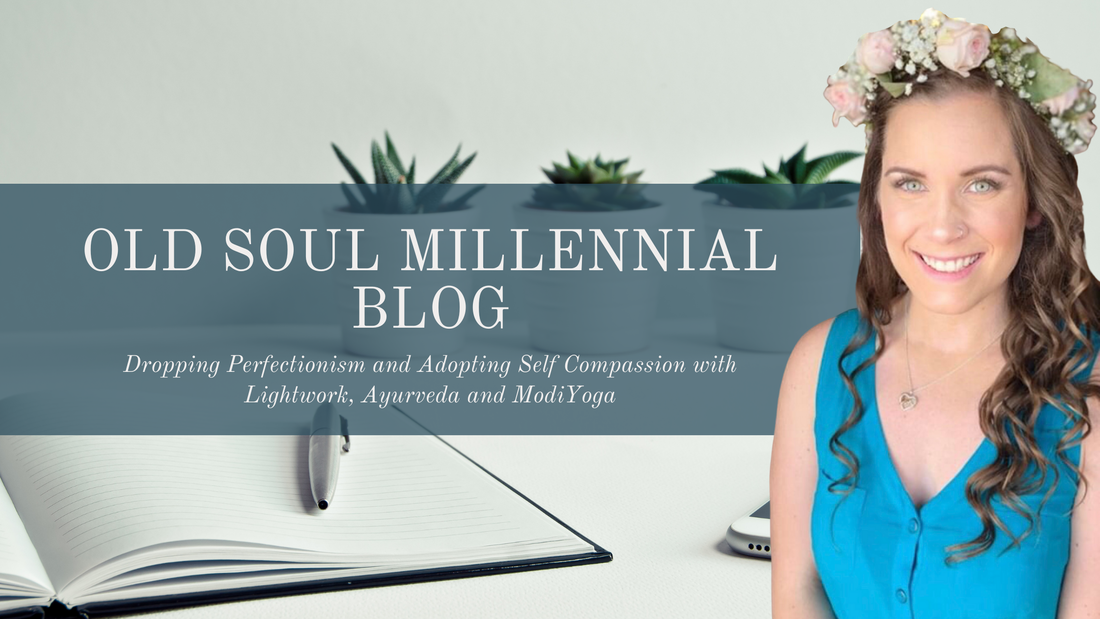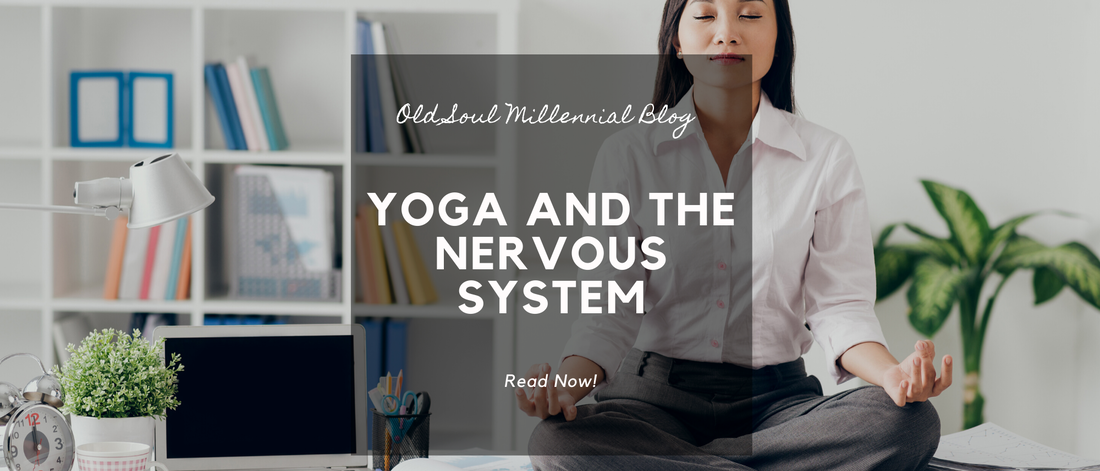|
Blog Author: Emilia Wheaton Blog Editor: Kristen Kennedy Smith Oils can be part of a healthy, tasty diet as well as a key aspect of an Ayurvedic self-care routine. Just when you thought your favorite oil couldn’t get more rich and delicious or more soothing and nurturing, we’re here to tell you they can! Enriching oils, such as olive, sesame, or almond oil, with spices or herbs is one way to enhance the taste and healing capacity of an oil. Best yet, the process is super simple and leaves plenty of room for you to get creative with which spices and herbs you’d like to infuse in your oil of choice.
The process is called blooming and requires very little equipment or expertise. The idea is that the spices or herbs are heated which allows the chemical compounds that give the spice its’ unique flavor, scent and healing properties to become more readily available and absorbed by the oil. Taking cinnamon for example, follow these simple instructions:
Warming spices, like ginger, mustard seed, black pepper or cayenne are perfect for adding to cooking oil to be used as a dressing or cooking oil for your favorite recipes. Using warming spices as a body massage oil can bring comfort and soothing energy to Vata Dosha. Ginger, black pepper, or clove bloomed in oil will give Kaphas the jolt of energy they need. If you are feeling a Pitta imbalance, try blooming oil with cooling spices like cumin, fennel, cinnamon or cardamom. Blooming spices in oil is a great way to impart the benefits of spices to our body. By deeply infusing herbs and spices to our cooking and massage oils, our body can receive the special properties of each plant. When it comes to cosmetics, it is incredibly important that we are careful of what we apply to our bodies, as the skin has an incredible capacity to absorb good stuff as well as toxic chemicals. Instead of reaching for a lotion with a long list of mysterious ingredients, consider peeking through your cooking cabinets for some oil and spices or herbs that most resonate with your Dosha.
1 Comment
Blog Author: Emilia Wheaton Blog Editor: Kristen Kennedy Smith Do some of your big dreams seem so far off, so unattainable and complex you have no idea where to start? Maybe you don’t even dare dream these dreams because the mere idea of them seems unapproachable and far off. The irony of the situation is that those scary dreams are the ones closest tied to your soul’s purpose. There’s a myriad of cliche quotes about conquering fear to pursue your dreams...they’re cliche because they are so poetically true: “If it excites you and scares you at the same time, it probably means you should do it,” or “Sometimes the greatest rewards in life come from doing the things that scare you the most.” These popular quotes from unknown wise speakers reaffirm the importance of our dreams and can serve to empower us to take steady steps toward them.
The most powerful first step you can take is breathing life into your dreams by acknowledging them through intentional manifestation. Manifestation is the practice of calling realities into our future through the act of experiencing them ahead of time. By thinking deeply into what we wish our futures to hold we can develop a clear, concrete vision of whatever it is we desire. Taking this vision a step closer and framing our mindset to believe with conviction that we have already experienced this dream come true in reality sets in motion the power of manifestation. Manifestation isn’t synonymous with wishing, it is an optimistic expectation of what will be. Believing something to be true, as if we have already lived it isn’t a delusion, it is a vision. What we choose to see--inside ourselves and in our environments--is a key piece of this vision. Cultivating a mindset that is conducive to attaining our dreams can mean framing your thoughts and reactions of the things you experience, limiting your exposure to negative or destructive stimuli and spending time with those whose visions closely align with your own. My personal favorite piece of advice: “Do not take advice from someone you would not trade places with.” On the flip side, spending time with those whose values and visions are similar to yours will reinforce your own manifestations and guide you toward mentors that can help you along the path toward your dreams. This is not to say we should turn a blind eye to the negative aspects of our world (I firmly believe it is important to be aware of current global events), but to consume information mindfully and cautiously. A huge piece of information we consume is embedded within social media, which can be one of our society’s greatest assets or one of our most destructive outlets for negativity. Tread lightly through your social media feeds and consciously decide what you expose your psyche to. If this means unfollowing accounts that spread negative energy around a topic you are focused on uplifting or simply reducing the frequency of which you read the news to what is manageable for strong mental health, so be it. Take conscious steps to curate what you consume via media. Like the saying “you are what you eat,” I believe we are what we see. We become what we see in ourselves and in our futures. If our heads are full of negative self-talk and we continuously consume media that instills fear or anger within us, we will become fearful, angry, lower vibration versions of ourselves. If we flip the script and fill our heads with positive thoughts, with visions of what we are destined to become, with optimistic outlooks toward some of the harshest realities in our world, with hope and conviction that what we wish to be will, indeed, BE, we are manifesting the reality we dream of. Cultivating a mindset is a practice, such as yoga or meditation is. Give yourself patience as you retrain your thoughts and perceptions. This may not happen overnight but continuous redirecting of your thoughts and assumptions will guide you toward a future of your dreams. Manifestation is not a passive act of dreaming or wishing, but a deliberate step. Some intentional acts you can take are:
Affirmations and Innovations invites you to dream, to visualize, to manifest whatever it is you seek for yourself. We hope you may feel empowered to dare to dream, without self-judgement of doubt. All that you desire is attainable through the power of manifestation. Blog Author: Emilia Wheaton Blog Editor: Kristen Kennedy Smith Have you ever heard of the “mind-body connection” referred to when reading or hearing about yoga? As a general definition, the mind-body connection is the relationship between your physical body and your thoughts, feelings and attitudes; it is the idea that what is going on in the mind has a direct effect on your physical well being, and vice versa. Ann Swanson, a mind-body science educator and certified yoga therapist and author of The Science of Yoga writes: “enhancing your mind-body and body-mind connection increases your ability to self-regulate and improves your resilience.” Okay, so where does yoga come in? Yoga practice engages both our mind and our body through asanas (poses or postures) and pranayama (breathwork) while being consciously mindful to be fully present in the moment.
Swanson explains the neurocognitive (or mind-body) pathway: meditation and mindfulness, two of the philosophical teachings of yoga, increases our attention and awareness. This heightened attention in turn regulates the nervous system and helps you maintain homeostasis, or general maintenance of the body’s subconscious physical needs. Basically, the practice of yoga enhances mindfulness, which benefits your nervous system and allows the body to regulate itself more efficiently and naturally. The reverse pathway is also benefited through yoga. The body-mind (or neurophysiological) pathway is stimulated through the physical postures of yoga and offers benefits to your brain. Yoga gives you more body awareness, or interoception, which “affects your autonomic nervous system and changes your thoughts and neural pathways, building your brain and improving self-regulation” (Swanson, 189.) Yoga’s benefits work as a continuous loop through our nervous system from the brain down to our bodies, and back up again. The benefits are cyclical and build upon each other, improving your ability to self-regulate and control your reactions and stress response. Think of the reverse, which we know to be true: stress puts us at greater risk for diseases like cancer, heart disease and stroke. What if we had a way to better manage stress? Wait...we do! You guessed it, one of the multitudes of benefits of practicing yoga is stress reduction. According to Swanson’s research, “the greatest predictor of whether or not you will suffer from these diseases is not how much stress you experience but how you deal with and think about stress. Those who have more negative emotions amid stress are more likely to experience negative health outcomes.” Reframing your mindset and becoming a careful observer of your emotions, attitudes and thoughts through the practice of mindful yoga, is a way to retrain your brain away from negative reactions toward a more positive and healthy mindset. One beautiful aspect of our brains is it’s capacity to transform and grow throughout our lives. Swanson highlights the brain’s ability to rewire: “it is said that neurons that fire together, wire together. The more you practice an activity--or a mindset--the more networks are created.” Each time you consciously change your thoughts through awareness and practice, new neural pathways are formed or reinforced. The physical and philosophical hallmarks of yoga go hand-in-hand to assist us on a path toward improved mind-body wellbeing. Many restorative yoga poses, such as child’s pose, legs up the wall, or supported bridge pose can help establish a strong mind-body connection. For example, child’s pose, which requires very little muscle engagement, allows for a gentle stretch and brings calmness to your body and mind. Taking time to allow the floor beneath you support your head allows your neck to take a break from the important job of holding your head upright. Allowing your neck this reprieve also allows signals to your nervous system that it is safe to rest. Try incorporating some restorative yoga postures into your daily routine to promote nervous system health and to foster a deeper mind-body connection. When we promote physical, emotional and mental wellbeing equally, our body’s intertwined system is strengthened top to bottom and from the bottom up. Just as our body can become exhausted after a taxing physical expenditure, our brain can often require rest and rejuvenation after emotional or mental taxation. Listen to your body’s cues and begin to reinforce a strong mind-body connection to promote optimal overall health. Source: Swanson, A. (2019). Science of yoga. London: Dorling Kindersley. Blog Author: Emilia Wheaton Blog Editor: Kristen Kennedy Smith Feeling scattered or distracted, when your mind feels like a chaotic place, can be a part of life while we are living among constant little stressors and overstimulation. If we let this hectic energy go untamed we allow our thoughts and feelings to float adrift without anything tethering the strands of our mind together. We’ve lost track of our brain’s peace and order and allowed our mind to become scattered as we jump from one task to the next. Or, we lose ourselves in our thoughts, jump between one idea to the next without the ability to focus on developing an action plan or analyzing each of our thoughts. Some of us might feel unsure of ourselves, lacking confidence in our decisions and result in anxiety. I’m confident each of us has felt this before.
Picture yourself plopped in a busy open air produce market with the intention of buying ingredients for dinner but you forgot the recipe at home so you wander from stall to stall picking up the ingredients you seem to remember but are simultaneously distracted by the exotic fruits and the eclectic art and then, out of the blue, you run into a friend who has a story to tell so you sit down for coffee but the whole time you’re talking with her you are racking your brain for the recipe’s essential spice you don’t want to forget. Pheewwwww. Hectic, right?? Envision this marketplace scene as the inner workings of your mind. This feeling is the result of losing our sense of groundedness. But not to fear! We can reclaim our internal stability and feel more grounded if we just consciously practice a few strategies and actions as a peaceful rearrangement of our flighty minds. Many rely on frequent yoga practice to ground themselves. You can incorporate grounding poses into your practice, or do them independently to cultivate a sense of stability. One grounding pose is mountain pose, where you stand firmly with your feet together and your arms by your sides and palms facing forward. Another is a seated twist: sit comfortably with your legs crossed and place your opposite hand on the opposite knee to gently breathe into a soft twist in your spine. A third, and my personal favorite, is your preferred variation of child's pose: sit on your shins and allow yourself to fold over, letting your belly rest on your thighs and forehead rest on the earth, choosing to stretch your arms toward the top of your mat or to relax them alongside your torso and legs. These poses channel the calming, stable energy of the earth to our minds and bodies. For bonus points, try these poses barefooted to connect to Mother Earth most directly. This intentional skin to earth contact is sure to root you and allow the transfer of energy and nutrients from the earth to your physical body. Do you ever get the urge to take your shoes off and feel the cool green grass peek between your toes? When hiking along a creek do you ever ditch your shoes so you can feel the water rush over the river rocks? This urge is a natural reminder that we are in need of this body-earth connection that only being physically in touch with nature can provide. Another benefit of grounding is the balancing of the root chakra which can allow us to feel calm, in control and present. When our root chakra is balanced, we feel rooted in ourselves and less likely to be swayed by the opinion or actions of others. With our root chakra grounded, we can step out of fight or flight mode and calmly make decisions that best benefit ourselves based on information from our surroundings we can gather intentionally rather than simply react to in a fluster. The next time you are feeling spacey, distracted, or unstable, I invite you to try a grounding technique. This experience, a lack of groundedness, is closely related to an imbalance of your root chakra, so pay special attention to what this area of your body is asking for. Roll out your yoga mat for a few quick grounding poses. Step into your backyard and remove your shoes, digging your toes into the earth. Root your body down into the earth so you may rise above the commotion of your mind. |
AuthorAbout the Editor: Archives
January 2021
Categories |






 RSS Feed
RSS Feed
